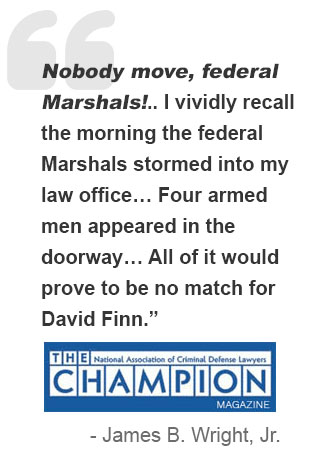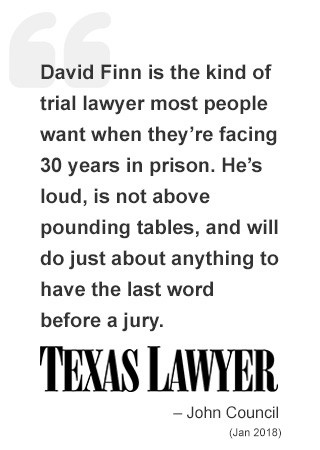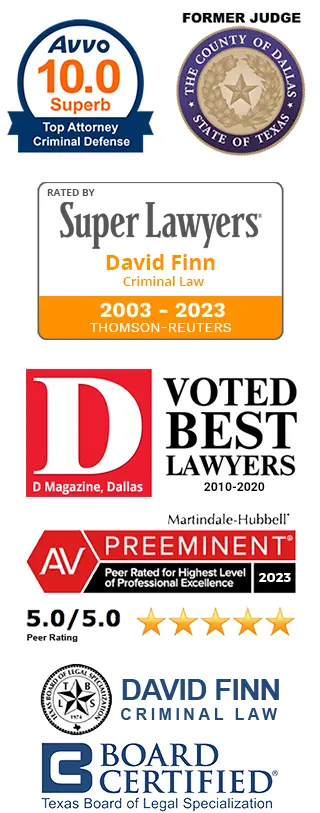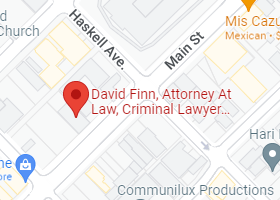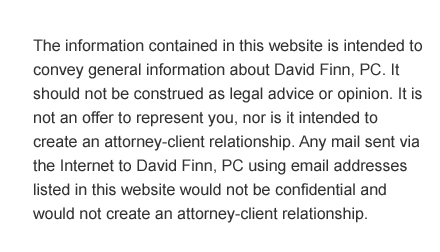


Library of Motions – Attacking HGN
Attacking HGN
Standardization problems – Tests are referred to as “Standardized Field Sobriety Tests” for a reason. This means that specific rules for administering, scoring, and interpretation have been specified and researched. If research findings are used to support the validity of the tests, since a test that is modified is no longer the same test – this makes standardization crucial. The National Highway Transportation Safety Administration (NHTSA) states, “If any one of the standardized field sobriety test elements is changed, the validity is compromised. ( National Highway Traffic Safety ADM., U. S. Dept. Of Transp., HS 178.R2/00, DWI Detection and Standardized Field Sobriety Testing, Student Manual (2000) at VIII-3
In Emerson v. State, 880 S. W. 2d 759 (Tex. Crim. App. 1994) the court held that if not properly administered, the Standardized Field Sobriety Tests are not admissible. Also see McRae v. State, 152 S. W. 3d 738, 743-744 (Tex. App. – Houston [1 st Dist.] 2004) ( HGN Test
Appellant contends that the trial court erred by allowing the arresting officer to testify that appellant had six clues, the maximum number possible, on the HGN test because, by the officer’s own admission, he administered the test to appellant incorrectly. HN4HGN evidence is reliable, admissible scientific evidence under rule 702 when performed by a police officer who is certified by the National Highway Transportation Safety Administration (NHTSA) n1 and who applies the technique properly. Emerson v. State, 880 S.W.2d 759, 768 (Tex. Crim. App. 1994) (concluding that HGN evidence met the criteria in Kelly, 824 S.W.2d at 572). The HGN technique is applied properly when the officer follows the standardized procedures outlined in the DWI Detection Manual published by NHTSA. See id. In determining whether a person’s performance of the HGN test suggests intoxication, an officer must look for the following clues in each eye: (1) the lack of smooth pursuit, (2) distinct nystagmus at maximum deviation, and (3) the onset of nystagmus prior to 45 degrees. Compton v. State, 120 S.W.3d 375, 377 [**6] (Tex. App.–Texarkana 2003, pet. ref’d) (citing NAT’L HIGHWAY TRAFFIC SAFETY ADMIN., U.S. DEP’T OF TRANSP., DWI DETECTION AND STANDARDIZED FIELD SOBRIETY TESTING STUDENT MANUAL at VIII-6). Slight variations in the administration of the HGN test do not render the evidence inadmissible or unreliable, but may affect the weight to give the testimony. Compton, 120 S.W.3d at 378.
– – – – – – – – – – – – – – Footnotes – – – – – – – – – – – – – – –
n1 The arresting officer was trained by NHTSA, is certified to perform the HGN test, and relied on that training and materials in performing the HGN test on appellant. Appellant has not challenged the officer’s qualifications.
– – – – – – – – – – – – End Footnotes- – – – – – – – – – – – – –
The undisputed testimony establishes that the arresting officer did not administer the HGN technique properly to appellant. Although the officer testified that he administered all three parts of the HGN test to appellant, he admitted at appellant’s Administrative License Revocation (ALR) hearing that he testified that he had administered only two out of the three required parts of the HGN because he [**7] did not conduct the onset-of-nystagmus portion of the test. The officer also admitted making several other misstatements concerning the HGN test. n2 When confronted [*744] with the procedural errors made in administering the HGN test that did not comply with the NHTSA guidelines, the officer was asked whether there was a “valid HGN test” on appellant. The officer replied that there was none.
– – – – – – – – – – – – – – Footnotes – – – – – – – – – – – – – – –
n2 The officer’s ALR testimony and trial testimony differ concerning the number of seconds it took to conduct the smooth pursuit and maximum deviation portions of the HGN test. We recognize that slight deviations in the timing of the HGN test have been determined not to affect the HGN technique or the admissibility of the HGN evidence. Compton v. State, 120 S.W.3d 375, 378 (Tex. App.–Texarkana 2003, pet. ref’d). The officer also admitted that he made only one pass of each eye rather than two passes of each eye during the HGN test and further testified that this failure to make two passes of each eye was a violation of the guidelines in the NHTSA manual. Cf. Quinney v. State, 99 S.W.3d 853, 858 ( Tex. App.–Houston [14th Dist.] 2003, no pet.) (holding that NHTSA’s manual only requires one pass of each eye).
– – – – – – – – – – – – End Footnotes- – – – – – – – – – – – – – [**8]
Under these circumstances, which show that the officer acknowledged that the HGN test administered to appellant was invalid, we cannot conclude that the HGN technique was applied properly, as required by Emerson. See 880 S.W.2d at 768. Likewise we cannot conclude that the error was merely a slight variation in the administration of the HGN test. See Compton, 120 S.W.3d at 378. We therefore conclude that the trial court abused its discretion by allowing the officer to testify that appellant had six clues on the HGN test because the technique applying the HGN was improperly administered and resulted in an invalid test. See id.)
In Compton, see above, there were “slight variations” in the timing which the court concluded were not significant. (no scientific testimony regarding the validity of this type of assessment by the court) The problem with Compton is that the court ignores how important it is for the officer to hold the eye at maximum deviation for at least four seconds to ensure that the jerking is sustained. Otherwise the movement can possibly be attributed to eye strain. As stated in its publication, Horizontal Gaze Nystagmus: The Science & The Law, the National Highway Transportation Safety Administration states “Law Enforcement officers will not confuse HGN with any other type of nystagmus if the HGN test is conducted correctly.” www.nhtsa.dot.gov/people/injury/enforce/nystagmus/hgntxt.html (this is a very good article to read so that you can be ready for what the prosecution is being taught to do in the courtroom)
In Plouff v. State, 192 S. W. 3d 213 (Tex. App. – Houston [14 th Dist.] 2006), The appellate court demonstrated the great lengths it would go to affirm the use of the field sobriety tests. This case was tried by Troy McKinney and Troy Walden was the defense expert. Walden testified that the tests were not administered properly based upon his viewing of the video tape. Cop said he did them the correct way. Appellate court stated that the court (this was litigated on a Motion to Suppress) apparently believed Officer and then went on to say any error was harmless. Continued reference made to fact that “slight variations” not important.
To develop a good record there must be testimony as to why a slight variation is not acceptable.
In McClain v. State, No. 05-03-01785-CR, 2005 Tex. App. Lexis 760, an unpublished opinion, the Dallas court of appeals was asked to determine whether the trial court abused its discretion in allowing a police officer to testify regarding field sobriety tests as a lay person and not as an expert. The defense offered James Booker, a toxicologist, to explain why FSTs are unreliable “in many situations” and that certified field sobriety officers undergo “very specific” training in order to learn the “the nuances” of administering FSTs and the “clues” that are sought. For example, a “lay person” might construe not actually touching toe to heel during the “walk and turn” as a “clue” when a certified officer would know to allow a “grace” of a half inch. Booker testified that because of the “very specific” training received, a certified officer is more credible than a “lay person”. Court let cop testify as a lay person. Cop testified that defendant had so many “clues” and indicated whether he thought the defendant “passed” or “failed”. Argument by defendant was that allowing him to testify like this turned him into “expert” and gave his credibility a boost. Court responded that error, if present was harmless.
What is necessary now is for the defense bar to prepare a case, with a very detailed developed record, to challenge the ability of the trial courts to take judicial notice of the reliability of HGN testing as well as its application in the specific case on trial. This takes time, money and experts.
To successfully challenge FSTs, particularly HGN, you must present expert testimony that the use of FSTs to determine “intoxication” is not scientifically validated. At most, the tests are circumstantial evidence that one may have used alcohol or may be intoxicated. They are not evidence of intoxication! In 1994 the Court of Criminal Appeals took judicial notice of the reliability of HGN testing. They used predominately, information provided by the NHSTA and NITA, organizations that are hardly objective. In 2002, after an extensive pretrial hearing wherein experts were called to support the defendant’s contention that the FSTs are not reliable indicators of intoxication, the court, Justice Grimm of the United States District Court for the District of Maryland, held the following:
- The results of properly conducted SFSTs may be considered for probable cause at trial;
- The results of SFSTs cannot be used to prove a specific alcohol concentration;
- There is a well-recognized causal connection between the ingestion of alcohol and exaggerated HGN;
- A police officer trained and qualified to perform SFSTs may testify to his observations, if properly administered, but may not use value-added descriptions to characterize the subjects performance, such as saying the subject “failed the test” or “exhibited” a certain number of ‘standardized clues” during the test;
- If the government introduces evidence of nystagmus, the defendant may bring out either during cross-examination or by asking the court to take judicial notice of the fact that there are many causes of nystagmus other than alcohol ingestion; and
- If otherwise admissible, the police officer may give lay opinion testimony that the Defendant was Driving Under the Influence, but he may not bolster the testimony by reference to any scientific, technical or specialized information learned from law enforcement or traffic safety instruction. United States v. Horn, 185 F. Supp. 2d 530 (D. Md. 2002)
The court looked at all available information regarding SFSTs, including studies that were not available when the Emerson court took judicial notice in Texas.
The pretrial hearing should include a challenge to the “judicial notice” aspect as well as to the proper performance of the tests.
I would suggest counsel get a copy of the studies performed that challenged the reliability of the SFSTs along with critiques of the methodology of the reliability tests and attach to a motion to suppress so that a trial court can read them ahead of time and maybe take judicial notice of the studies.
I would also suggest calling an expert on how things are “validated”. Maybe a statistician to testify that validation studies don’t work unless the tests are performed exactly as prescribed every time. If not, then the validation studies are not applicable.
Additional References
http://forensic-evidence.com/site/Biol_Evid/HGN.html HGN by Laine Means
http://www.california-drunkdriving.org/horizontal_gaze.html An excellent resource for someone who is going to cross-examine on HGN (Actually a list of questions asked in a drunk driving case.)
Mimi Coffey’s Article in Voice for the Defense, November 2004, pp16-20 DWI-Modern Day Salem Witch Hunts
http://www.dcba.org/brief/marissue/2002/art40302.htm Very well reasoned brief regarding field sobriety tests and admissibility – great analysis of U.S. v. Horn, 185 F. Supp. 2d 530 ( great case for the Defense and there is some reasoning there we need to continually reurge)
Columns:DWI: Part One: Essential Cases To Know In Handling Challenges To Scientific Evidence by Leonard Stamm 27 Champion 48 August 2003
Columns:DWI: (Part 2) The Psyhometrics and Science of the Standardized Field Sobriety Tests by Steven Rubenzer 27 Champion 40 June 2003
Exhaustive review of case law in all 50 states regarding HGN
Do “Standardized” Field Sobriety Tests Reliably Predict Intoxication?: Knowledge for drunk driving litigation by Patrick T. Barone and Jeffery S. Crampton for the Michigan Bar magazine
Comment: Walking The Line of Admissibility: Why Maryland Courts should reexamine the Admissibility of Field Sobriety Tests, Rick M. Grams 34 U. Balt. L. Rev. 365
Phone Numbers
Office: (214) 538-6629

